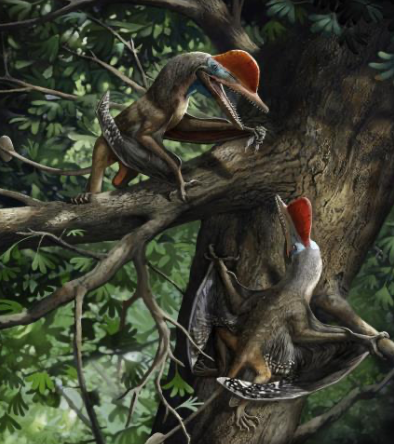Lived in the Jurassic Period
China, Apr 15: A team of researchers studied a well-preserved skeleton with an opposed pollex (thumb) on both hands. It was discovered in the Tiaojishan Formation of Liaoning, China embedded in rock. Researchers used micro-CT scanning to create a 3D rendering of the fossil and analysed the skeleton. It had a small body with an estimated wingspan of 85 cm. It lived between 161 and 158 million years ago (Jurassic period). They called it the “Monkeydactyl”, since the opposing thumbs helped in climbing trees like monkeys. It was named Kunpengopterus antipollicatus (antipollicatus means “opposite thumbed” in ancient Greek). They belong to the darwinopteran pterosaurs group.
Darwinopterans are a group of pterosaurs from the Jurassic period found in China and Europe. They had unique transitional anatomy which helped in studying the evolution of pterosaurs and were named after Charles Darwin, the father of evolution.

the monkeydactyl Image credits: Chuang Zhao

